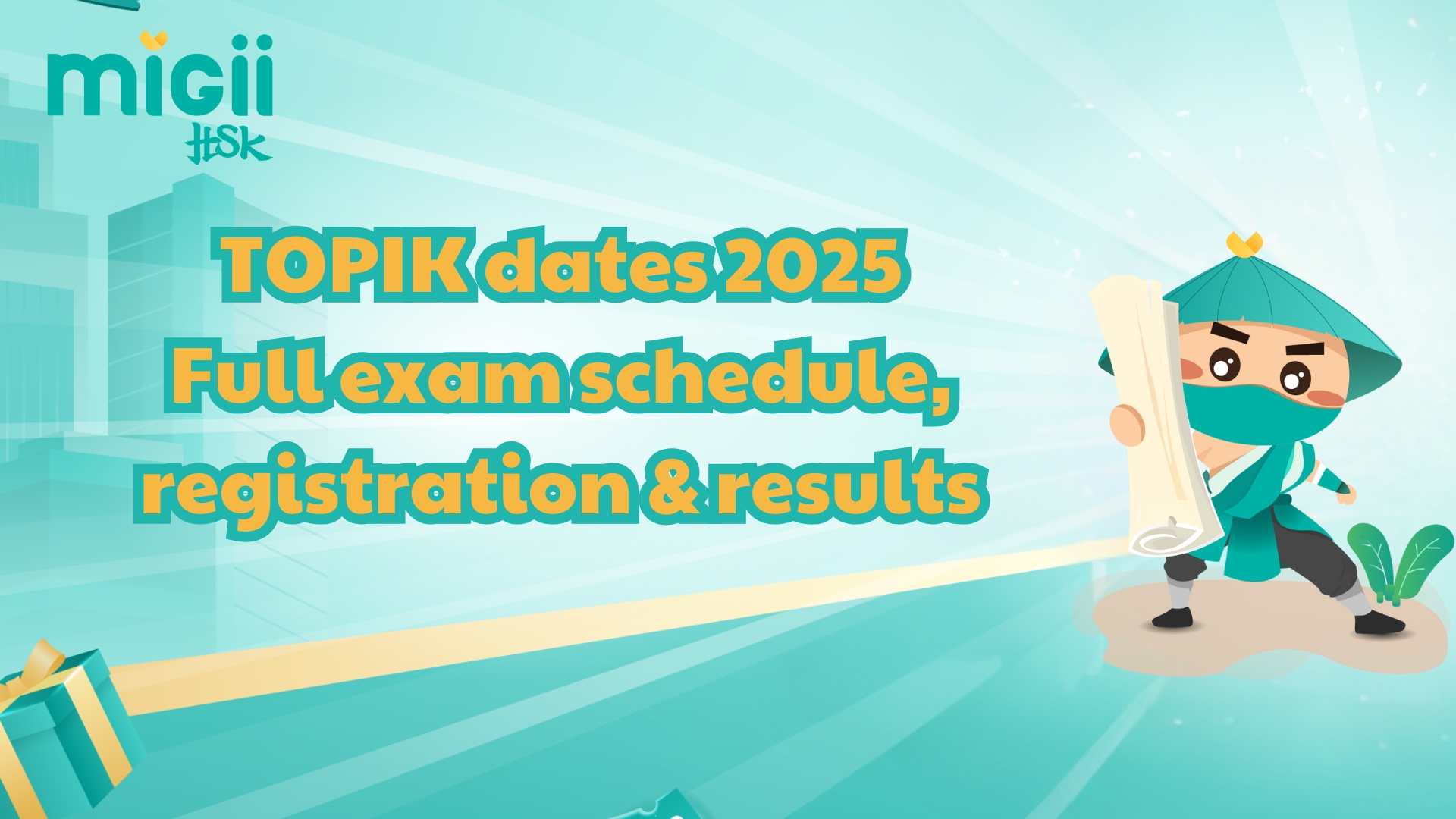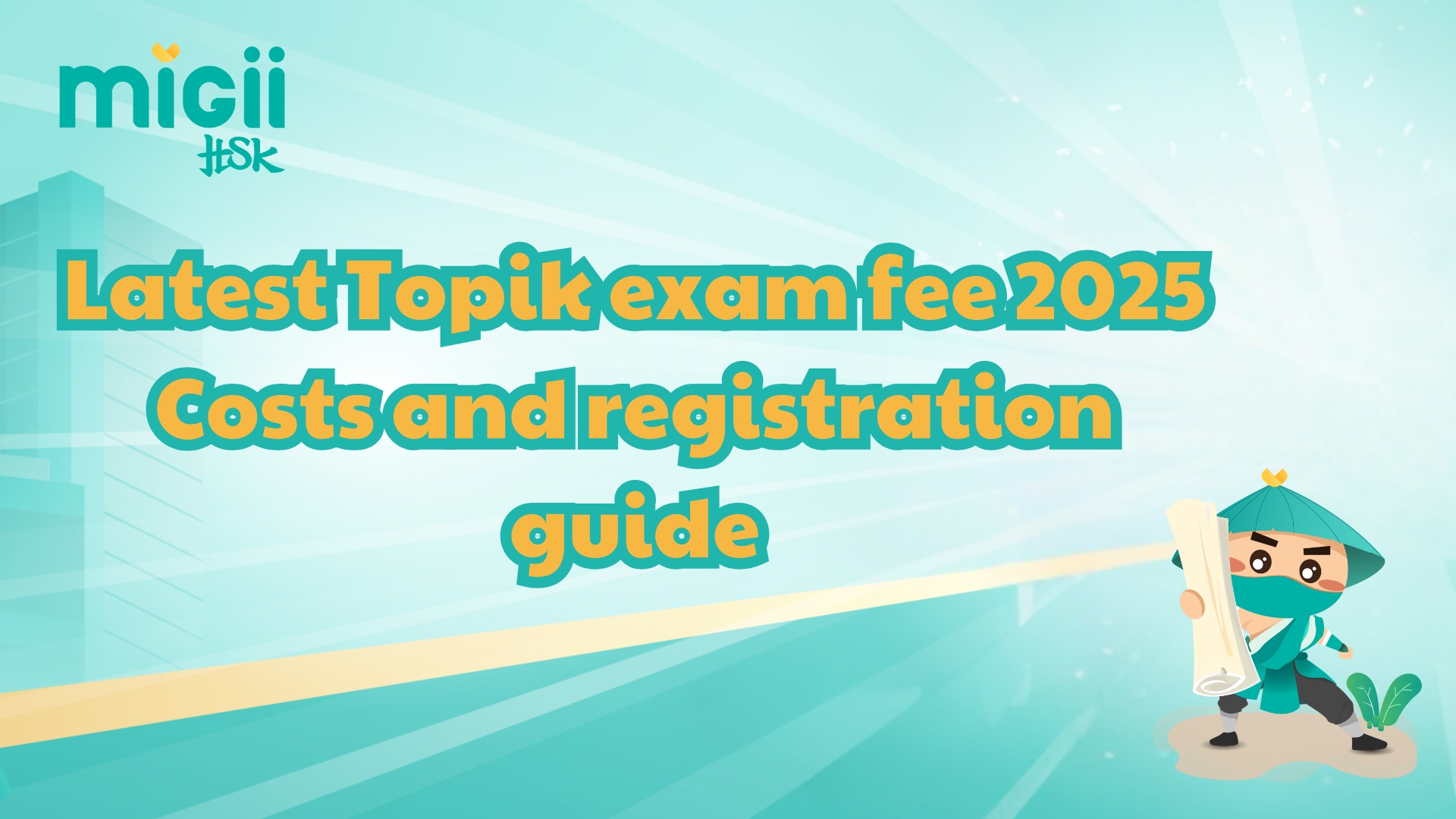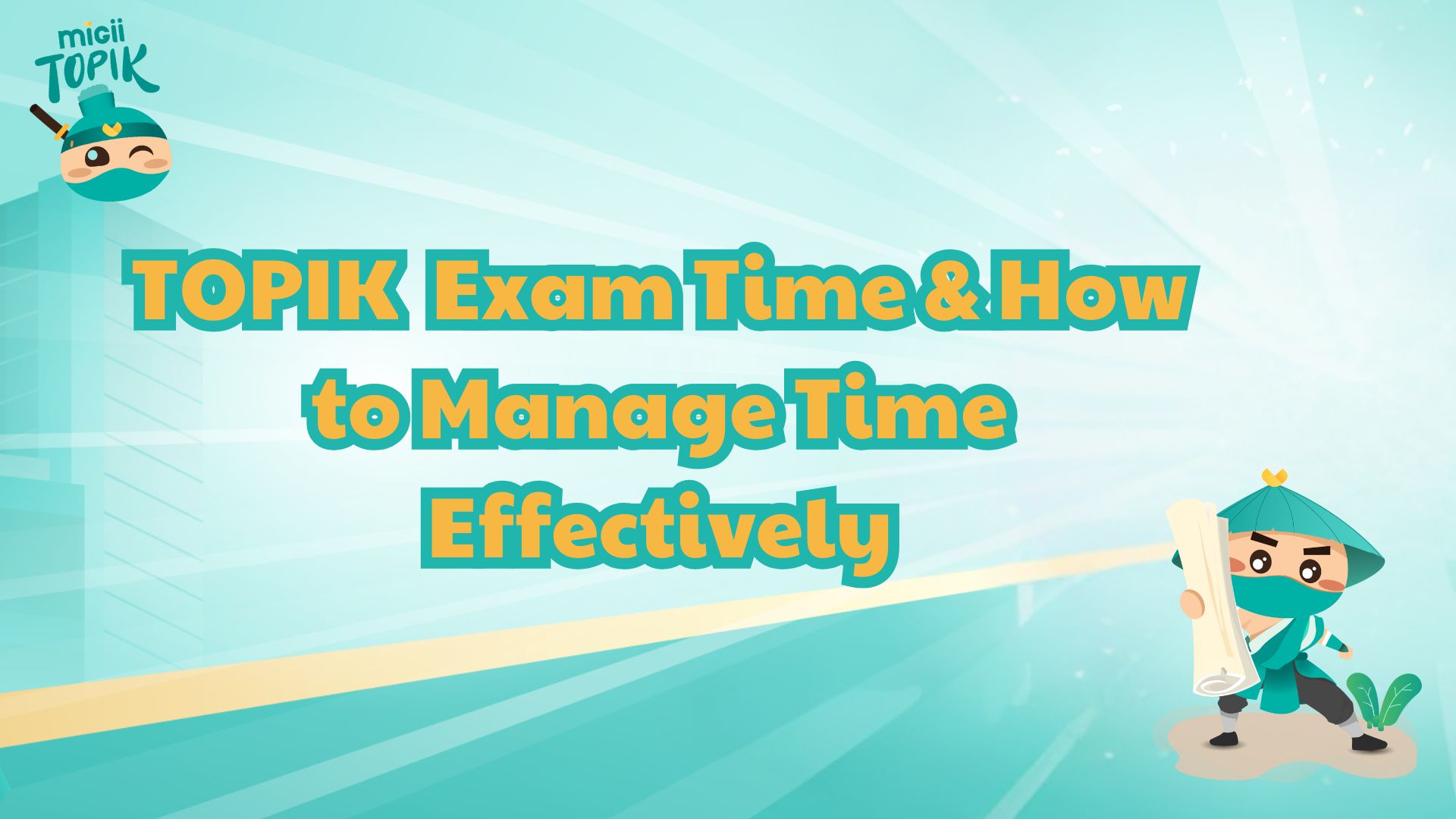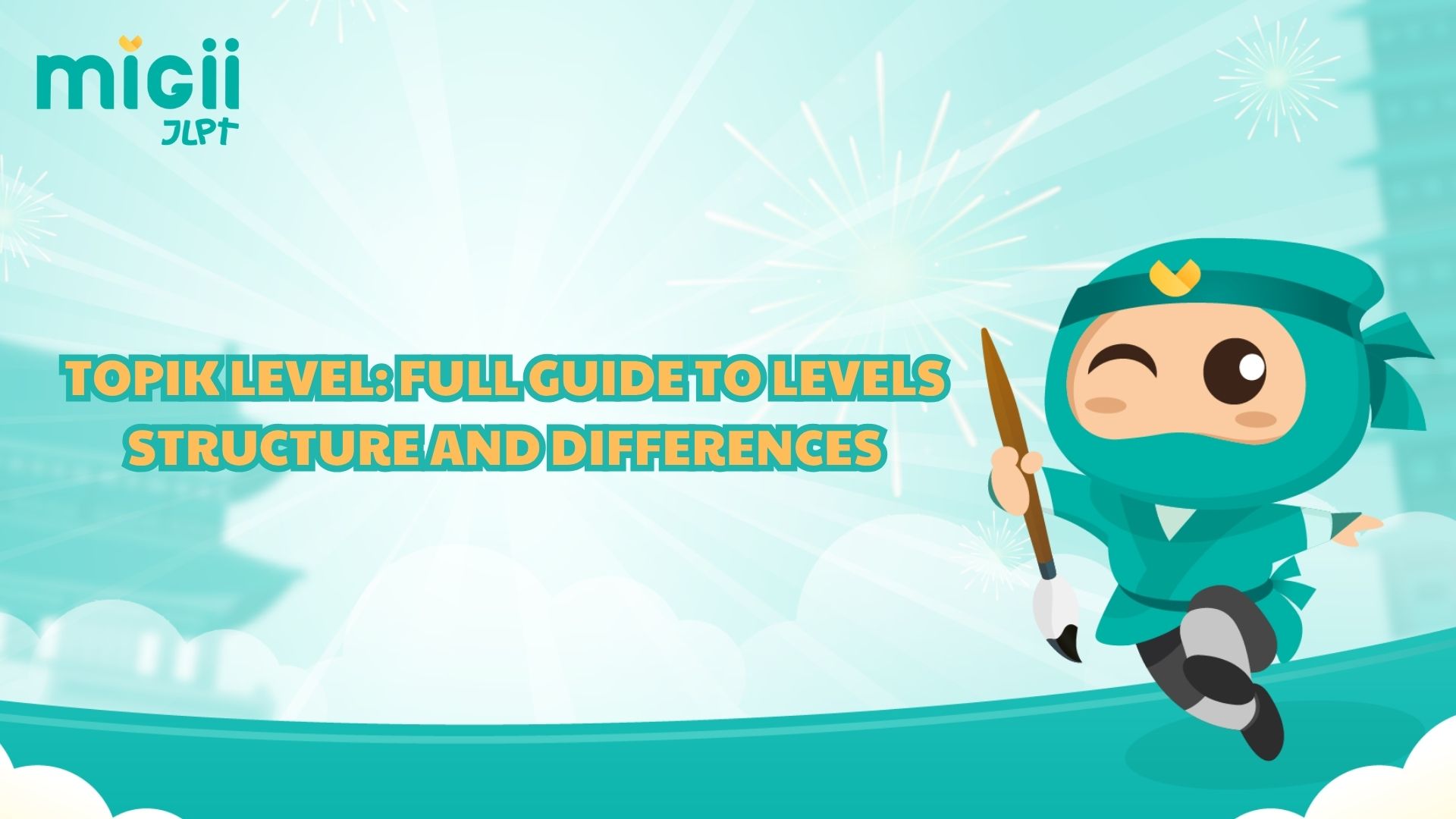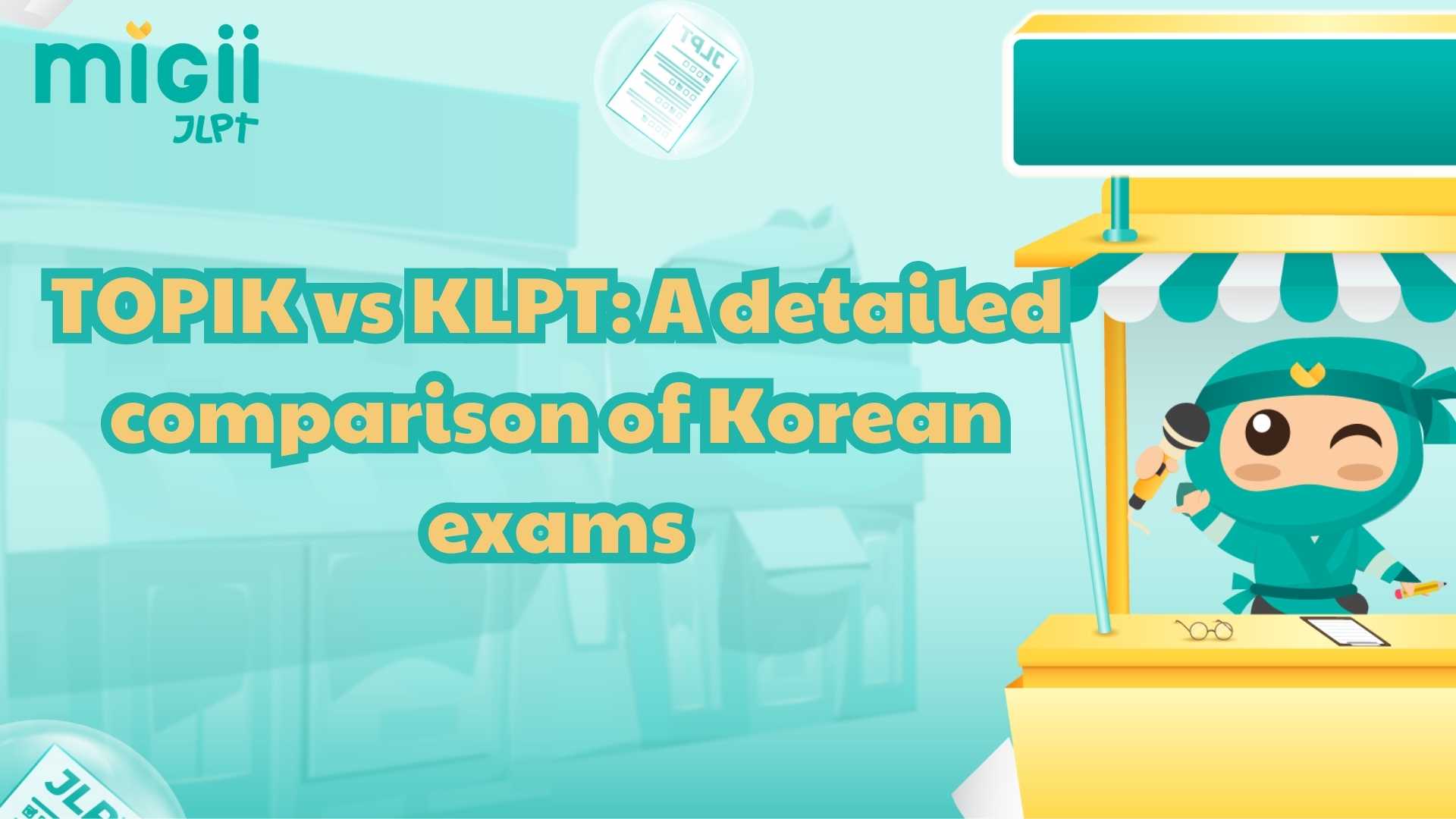The JLPT Japanese test is one of the most recognized JLPT tests worldwide for evaluating Japanese language skills. Whether you're preparing for study, work, or immigration, understanding JLPT exams is the first step. Read on to explore everything you need to know.
What is the JLPT test? What does JLPT mean?
The JLPT test, or Japanese Language Proficiency Test, is a standardized exam designed to evaluate and certify the Japanese language skills of non-native speakers. It was first introduced in 1984 and is jointly administered by the Japan Foundation and JEES (Japan Educational Exchanges and Services).
The JLPT focuses on measuring your reading and listening abilities, along with knowledge of grammar and vocabulary. However, it does not include speaking or writing sections, which makes it unique compared to other language proficiency tests.
This test is widely recognized by Japanese universities, employers, and even the Japanese government as proof of language proficiency. Many people take the JLPT to boost their resumes, qualify for scholarships, apply for jobs, or fulfill visa requirements such as the Specified Skilled Worker visa.
Unlike some exams, the JLPT has no age restrictions and no requirement to take lower levels before higher ones — for example, you can take N3 or N2 without taking N5 or N4 first. It’s available twice a year (July and December) in over 60 countries, making it one of the most accessible Japanese tests worldwide.
Understanding JLPT Tests Structure
The JLPT tests are designed to evaluate your Japanese language proficiency through a structured format that focuses on reading, listening, and language knowledge (vocabulary and grammar). All JLPT exams are multiple-choice only, with no speaking or writing sections.
The test is divided into several sections, depending on the level you take:
JLPT N5 Exam Structure Overview
Section 1: Language Knowledge – Vocabulary (25 minutes)
|
Part |
Number of Questions |
Objective |
|
1. Kanji Reading |
12 |
Identify the correct readings of basic Kanji |
|
2. Orthography |
8 |
Convert between Hiragana, Katakana, and Kanji |
|
3. Contextual Meaning |
10 |
Choose words that fit best in a sentence or short passage |
|
4. Synonyms / Paraphrase |
5 |
Find alternative expressions or synonyms |
Section 2: Language Knowledge – Grammar & Reading (50 minutes)
|
Part |
Number of Questions |
Objective |
|
Grammar |
||
|
1. Sentence Grammar 1 |
16 |
Select the correct grammar pattern |
|
2. Sentence Grammar 2 |
5 |
Build grammatically correct and coherent sentences |
|
3. Paragraph Grammar |
5 |
Choose the most contextually appropriate sentence |
|
Reading |
||
|
4. Short Text Comprehension |
3 |
Understand ~80-character texts related to daily life, school, or work |
|
5. Medium Text Comprehension |
2 |
Understand ~250-character passages on everyday topics |
|
6. Information Retrieval |
1 |
Extract specific information from texts (~250 characters) |
Section 3: Listening (30 minutes)
|
Part |
Number of Questions |
Objective |
|
1. Task-Based Listening |
7 |
Understand the purpose and content of a spoken task or dialogue |
|
2. Key Point Listening |
6 |
Grasp and filter main points in a conversation |
|
3. Visual Listening |
5 |
Listen and choose the correct answer based on images and explanations |
|
4. Instant Response |
6 |
Respond correctly to short spoken prompts |
JLPT N4 Exam Structure
Section 1: Language Knowledge – Vocabulary (30 minutes)
|
Part |
Number of Questions |
Objective |
|
1. Kanji Reading |
9 |
Read and understand words written in Kanji |
|
2. Orthography |
6 |
Convert words from Hiragana into Katakana and Kanji |
|
3. Contextual Meaning |
10 |
Choose the most appropriate word based on context |
|
4. Synonyms / Paraphrase |
5 |
Find expressions similar in meaning |
|
5. Word Usage |
5 |
Understand correct usage of words in sentences |
Section 2: Language Knowledge – Grammar & Reading (60 minutes)
|
Part |
Number of Questions |
Objective |
|
Grammar |
||
|
1. Sentence Grammar 1 |
15 |
Select the proper grammatical structure for sentences |
|
2. Sentence Grammar 2 |
5 |
Build coherent and grammatically correct sentences |
|
3. Paragraph Grammar |
5 |
Choose the best sentence that fits the tone and content of a passage |
|
Reading |
||
|
4. Short Text Comprehension |
4 |
Understand 100–200 Kanji-character passages about daily life |
|
5. Medium Text Comprehension |
4 |
Understand 350-character texts with various writing styles |
|
6. Information Retrieval |
2 |
Find necessary information in a 600-character passage |
Section 3: Listening (35 minutes)
|
Part |
Number of Questions |
Objective |
|
1. Task-Based Listening |
8 |
Comprehend spoken content from short dialogues or narrations |
|
2. Key Point Listening |
7 |
Understand key points and information from guided audio clips |
|
3. Visual Listening |
5 |
Listen and match explanations to illustrations or visual prompts |
|
4. Instant Response |
8 |
Choose the correct response to short spoken phrases |
JLPT N3 Exam Structure Overview
Section 1: Language Knowledge – Vocabulary (30 minutes)
|
Part |
Number of Questions |
Objective |
|
1. Kanji Reading |
8 |
Read and understand words written in Kanji |
|
2. Orthography |
6 |
Convert Hiragana into Katakana or Kanji correctly |
|
3. Contextual Meaning |
11 |
Select words that best fit the sentence context |
|
4. Synonyms / Paraphrase |
5 |
Identify expressions with similar meaning |
|
5. Word Usage |
5 |
Understand how a word is used within a sentence |
Section 2: Language Knowledge – Grammar & Reading (70 minutes)
|
Part |
Number of Questions |
Objective |
|
Grammar |
||
|
1. Sentence Grammar 1 |
13 |
Choose grammatically correct sentence structures |
|
2. Sentence Grammar 2 |
5 |
Create fluent and grammatically correct sentences |
|
3. Paragraph Grammar |
5 |
Select the most appropriate sentence to fit the paragraph meaning |
|
Reading |
||
|
4. Short Text Comprehension |
4 |
Understand ~200 Kanji-character passages on daily life topics |
|
5. Medium Text Comprehension |
6 |
Read and interpret ~350-character passages involving connectors and logic |
|
6. Long Text – Opinion/Claim |
4 |
Understand ~500-character texts with various tones and argumentative styles |
|
7. Information Retrieval |
2 |
Extract needed data from flyers or documents (~600 characters) |
Section 3: Listening (40 minutes)
|
Part |
Number of Questions |
Objective |
|
1. Task-Based Listening |
6 |
Comprehend and extract key information from audio |
|
2. Key Point Listening |
6 |
Understand and summarize essential points from spoken texts |
|
3. General Idea Listening |
3 |
Understand main ideas and speaker intent in conversations |
|
4. Visual Listening |
4 |
Listen to explanations and match with visuals |
|
5. Instant Response |
9 |
Choose the correct reply to short dialogues |
JLPT N2 Exam Structure Overview
Section 1: Language Knowledge & Reading (105 minutes)
|
Part |
Number of Questions |
Objective |
|
Vocabulary & Kanji |
||
|
1. Kanji Reading |
5 |
Read and understand words written in Kanji |
|
2. Orthography |
5 |
Convert Hiragana into Katakana or Kanji |
|
3. Word Formation |
5 |
Recognize compound words and word derivatives |
|
4. Contextual Meaning |
7 |
Choose words that fit naturally in context |
|
5. Synonyms / Paraphrase |
5 |
Identify expressions with similar meaning |
|
6. Word Usage |
5 |
Understand how to correctly use words in sentences |
|
Grammar |
||
|
7. Sentence Grammar 1 |
12 |
Select grammar patterns appropriate for the context |
|
8. Sentence Grammar 2 |
5 |
Create grammatically correct and coherent sentences |
|
9. Paragraph Grammar |
5 |
Choose sentences that logically follow the flow of the paragraph |
|
Reading Comprehension |
||
|
10. Short Text Comprehension |
5 |
Understand ~200-Kanji character texts related to work or daily life |
|
11. Medium Text Comprehension |
9 |
Understand ~500-character texts; grasp author’s reasoning and cause-effect |
|
12. Integrative Reading |
2 |
Compare, synthesize, and relate information from ~600-character texts |
|
13. Opinion/Claim in Long Text |
3 |
Comprehend key ideas in ~900-character argumentative texts |
|
14. Information Retrieval |
2 |
Extract details from flyers, magazines (~700 characters) |
Section 2: Listening (50 minutes)
|
Part |
Number of Questions |
Objective |
|
1. Task-Based Listening |
5 |
Understand purpose, key points, and speaker’s intent |
|
2. Key Point Listening |
6 |
Identify main ideas from monologues or dialogues |
|
3. General Idea Listening |
5 |
Grasp overall meaning and speaker’s position or intent |
|
4. Instant Response |
12 |
Respond to short spoken prompts |
|
5. Integrative Listening |
4 |
Listen to longer conversations, analyze and compare multiple viewpoints |
JLPT N1 Exam Structure
Section 1: Language Knowledge & Reading (110 minutes)
|
Part |
Number of Questions |
Objective |
|
Vocabulary & Usage |
||
|
1. Kanji Reading |
6 |
Read and understand advanced-level Kanji words |
|
2. Contextual Meaning |
7 |
Choose context-appropriate words based on the sentence flow |
|
3. Synonyms / Paraphrase |
6 |
Identify alternative expressions or similar-meaning words |
|
4. Word Usage |
6 |
Understand correct usage of words in different sentence contexts |
|
Grammar |
||
|
5. Sentence Grammar 1 |
10 |
Choose grammatically appropriate forms for sentence completion |
|
6. Sentence Grammar 2 |
5 |
Build coherent and grammatically accurate sentences |
|
7. Paragraph Grammar |
5 |
Select sentences that fit logically within a paragraph's structure |
|
Reading Comprehension |
||
|
8. Short Text Comprehension |
4 |
Understand ~200-character passages on everyday or workplace topics |
|
9. Medium Text Comprehension |
9 |
Understand ~500-character passages; analyze author's thinking and intent |
|
10. Long Text Comprehension |
4 |
Grasp ~1000-character texts; summarize author’s logic and tone |
|
11. Integrative Reading |
3 |
Compare, synthesize, and relate ideas across ~600-character texts |
|
12. Opinion/Abstract Reasoning |
4 |
Understand complex ~1000-character argumentative or abstract texts |
|
13. Information Retrieval |
2 |
Extract key details from flyers, ads, or magazines (~700-character texts) |
Section 2: Listening (60 minutes)
|
Part |
Number of Questions |
Objective |
|
1. Task-Based Listening |
6 |
Understand purpose, tone, and key details from audio |
|
2. Key Point Listening |
7 |
Identify essential points and filter out irrelevant information |
|
3. General Idea Listening |
6 |
Grasp the speaker’s intent and the main argument |
|
4. Instant Response |
14 |
Respond appropriately to short spoken prompts |
|
5. Integrative Listening |
4 |
Listen to long conversations, synthesize and compare multiple viewpoints |
JLPT Age Limit and JLPT Exam Requirements
Who can take the JLPT?
The Japanese Language Proficiency Test (JLPT) is open to all non-native speakers of Japanese, regardless of nationality, occupation, or educational background. It is suitable for a wide range of learners, including self-learners, high school or university students, and working professionals.
Age restrictions
There is no official age limit for taking the JLPT. Candidates of any age can register for the exam. However, as the test levels increase in difficulty, higher levels such as N2 and N1 may be more appropriate for advanced learners or adults with strong reading and listening skills.
Level selection and prerequisites
The JLPT consists of five levels, from N5 (beginner) to N1 (advanced). Candidates are not required to pass a lower level before registering for a higher one. For example, it is acceptable to take N3 without having passed N4. Learners are encouraged to assess their own proficiency and choose the level that best matches their ability.
Documents and conditions required
There are no specific academic or language certificates required to register for the JLPT. To take the test, candidates must:
- Complete the registration through the official website or designated local test center
- Pay the test fee (which varies by country)
- Present a valid form of identification on the test day
Recommendations before applying
Although there are no formal prerequisites, it is advisable to review sample test questions or take a practice test before selecting a level. This helps ensure that the chosen level aligns with the learner's actual proficiency and increases the chances of success.
How to Register for the JLPT Exam
Registration for the JLPT is conducted online through the official test website or designated local test centers. The exam is held twice a year—in July and December—in most countries.
To register, candidates need to:
- Create an account on the JLPT registration system (availability depends on country)
- Select a test location and level (N5 to N1)
- Pay the exam fee within the specified registration period
- Prepare a valid ID to present on test day
The exact registration process, deadlines, and fees vary by country. For a detailed guide, refer to JLPT Test Registration & Test Dates 2025 (Ultimate Guide)
When and Where Are JLPT Tests Held?
Test schedule
The JLPT is usually held twice a year:
- July session: early July
- December session: early December
In some countries, the test may be offered only once per year, depending on local organizing conditions. It is important to check the exact schedule for your country in advance.
Test locations
The JLPT is available in Japan and over 60 countries and regions around the world.
You can find test centers in major cities across:
- Asia (e.g. Japan, Vietnam, Indonesia, Thailand, South Korea, China)
- Europe (e.g. Germany, France, United Kingdom, Spain)
- Americas (e.g. United States, Canada, Brazil)
- Oceania (e.g. Australia, New Zealand)
In Japan, the test is conducted in dozens of cities nationwide
FAQ About JLPT Tests
What is the JLPT?
The Japanese Language Proficiency Test (JLPT) is an internationally recognized exam that measures the Japanese language ability of non-native speakers. It consists of five levels, from N5 (easiest) to N1 (most advanced), and focuses on reading, listening, vocabulary, and grammar.
Who can take the JLPT?
Anyone who is not a native speaker of Japanese may take the JLPT. There are no restrictions based on age, education, or profession. The test is open to learners worldwide and is suitable for both students and working professionals.
Does the JLPT include a writing or speaking section?
No. The JLPT does not assess writing or speaking skills. The test only evaluates reading comprehension, listening ability, vocabulary, and grammar knowledge through multiple-choice questions.
Is there an age limit for the JLPT?
There is no official age restriction. Candidates of all ages may register for the test. However, younger learners may find the more advanced levels (e.g., N1 or N2) more challenging due to the complexity of the content.
Do I have to take JLPT levels in order (N5 → N1)?
No. You are not required to pass lower levels before attempting a higher one. You can choose any level based on your current language ability. For example, you may register directly for N3 without taking N4.
How is the JLPT scored?
Each JLPT level is scored out of 180 points, divided into sections (Language Knowledge, Reading, Listening). To pass, you must achieve both:
- A minimum overall score
- A minimum score in each section
Failing to meet the sectional minimum—even with a high total score—will result in a failing grade.
How long are JLPT certificates valid?
JLPT certificates do not expire. Once you pass a level, your result is valid indefinitely and can be used for job applications, university admissions, or visa requirements.
When are JLPT test results available?
Results are usually released 1–2 months after the test. Candidates can view their scores online via the official JLPT website. Printed score reports are mailed in certain countries.
How many times per year is the JLPT offered?
The JLPT is generally offered twice a year: in early July and early December. However, some countries may only offer one session per year, depending on demand and administrative capacity.
How should I prepare for the JLPT?
Preparation strategies vary by level, but generally include:
- Studying vocabulary and grammar from JLPT-based textbooks
- Taking official sample questions and mock exams
- Practicing reading comprehension and listening regularly
For a full guide to choosing resources by level, consider reading: JLPT Study Material: Best Resources for N5 to N1.
Conclusion
In conclusion, the JLPT Japanese Language Proficiency Test is an essential certification for anyone aiming to validate their Japanese skills. Understanding the structure of JLPT tests, the different levels, and how to prepare effectively will help you approach the exam with confidence. Whether you're taking your first JLPT Japanese test or aiming for N1, being well-informed is key to success. For personalized practice, mock exams, and preparation tools designed for all levels of JLPT exams, visit Migii JLPT and start your JLPT testing journey today.

